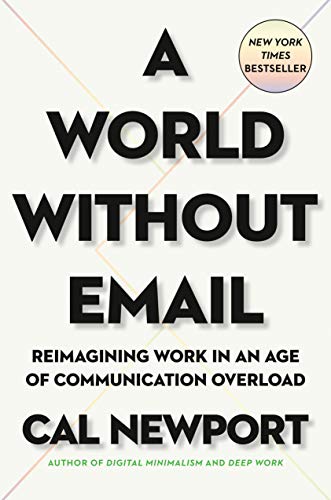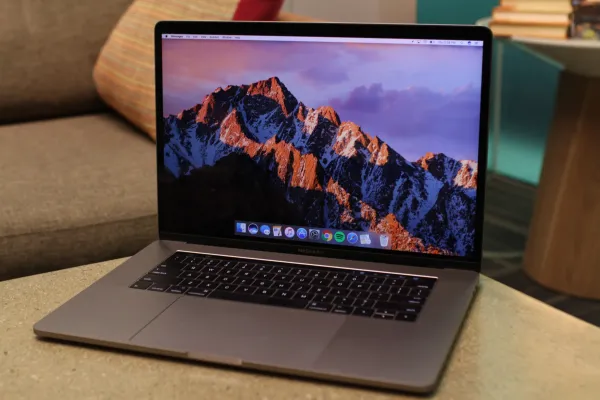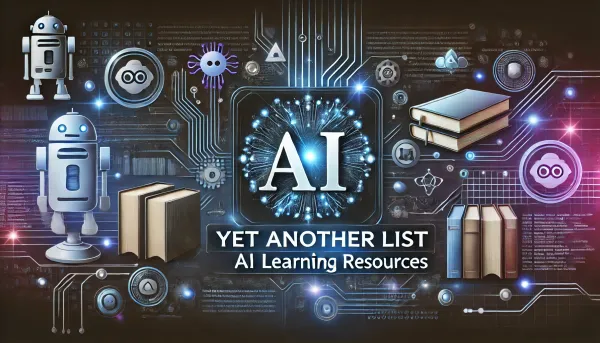Notes on "A World Without Email", plus my practical implementation

Cal Newport previously wrote “Deep Work”, which outlined a rule for success - you do your best work when you are in a large uninterrupted distraction-free block of time called a “deep work block”. Newport’s thesis is that a single uninterrupted 3-4 hour block of focused work on your most important tasks would pay far more dividends than 9-12x 20min blocks chunked throughout your day. (See my “Notes and Reflections on ‘Deep Work’ by Cal Newport” for details.)
This book didn’t revolutionize the workplace as much as Newport likely hoped, so the real question has become - why is it so hard to get deep work done?
It’s certainly not lack of awareness given how far and wide Newport’s book has spread, so there must be some sinister culprit. There are many ways to kill a deep work block, but the traditional villain has been meetings (see “Makers Schedule, Managers Schedule” by Paul Graham). But this has now been mostly addressed as well (at least within forward-looking tech and tech-adjacent companies) and reducing meetings doesn’t seem to have solved the problem much. So now what?
Newport has emerged with a new villain - email. And by email, Newport also means ubiquitous office instant messaging tools like Slack that have largely replaced email but not solved the problems. And Newport has also emerged with a new book to fight the villain - “A World Without Email”.
Again, as a reminder, when Newport says “A World Without Email”, you should also take this to mean “A World Without Slack” or whatever office chat you use. And therefore in these notes, you should always think of the word “email” as a shorthand for “email, Slack, whatever office communication platform you use, etc.” with the mostly but maybe not entirely correct assumption that they all share similar problems.
Also another reminder/caveat - in these notes I mainly aim to summarize what I find as the key takeaways of the book, from my understanding and as applied to my personal context (CEO of a non-profit), rather than try to present my all-things-considered view on how best to run a company.
Lastly, one more reminder/caveat that I think one’s personal context likely changes a lot about how you should approach this - managers need to be slightly more plugged in and I think independent contributors should consider dialing even harder into avoiding distraction than I would personally feel comfortable doing. You also may need to change your workflow depending on how collaborative your work is. But the basic problems will be very similar even if the constraints and solutions look different and context-dependent.
So with that in mind, let’s get into it.
The Four Core Problems
Basically, there are four core problems of email. I took the liberty to reorganize Newport’s book into concepts and give names to the concepts myself, rather than repeat the names Newport uses:
(1) the distraction-urgency trade-off – it is often incredibly useful to be able to get a hold of someone else instantaneously for them to respond to you about a question related to work but interrupting their work is often detrimental due to the negative effects of constant context switching. A message can unblock your work, but at the cost of interrupting their deep work. How does one solve this trade-off?
(2) the unavoidable trivialities problem - much of email is very trivial (e.g., random gifs and whatnot) that isn’t even worth interrupting your day, but it is very difficult when processing your email to tell which messages are high priority (and thus worth interrupting your work for) and which messages are low priority (and thus properly batched to a once-a-day scroll session or something).
(3) the FOMO problem - the feeling of not engaging with email triggers a fear of missing out (FOMO). This FOMO drives you to check email often and read everything, even when you really don’t need to.
(4) the overwhelm problem - the amount of work we have to do is just honestly truly overwhelming and we really just need to figure out how to individually do less stuff.
The interesting thing about email is that it is very hard to stop doing.
Newport writes that we’ve developed a hyperactive hive mind where we frequently switch attention between work and email (about work) and back again, and that this workflow has become so intertwined with work such that it cannot be easily removed. I think the premise of Newport’s earlier book “Deep Work” was that it wouldn’t be hard to just step away from email for very long periods of time, but this has proven harder than first suggested.
Much of “A World Without Email” is devoted to establishing the distraction generated from email as a problem, due to large amounts of context switching wrecking concentration, the typical worker getting overwh elmed with messages, and the typical worker being unable to make any “deep work blocks” happen. (When was the last time you truly worked for longer than two hours on something important without any email/Slack/etc-checking?)
However, a lot of this evidence is anecdotal and my thought is that really this book will either instantly resonate with you and your personal experience thus allowing you to know it is indeed a problem without needing any anecdotal evidence to point you in the right direction, or the book will not resonate with you and your personal experience and thus the anecdotes will not be convincing and thus this book is probably not going to contain as much value for you. So I don’t think there is any need to recap the evidence provided and thus I will skip all of this and just assume you and I agree that we know our attention is valuable, we need to protect it, deep work is important, and that there’s something about email that is getting in the way of things.
So, assuming this is a true problem, what should we do?
Newport’s answer is to pursue good interface design. Three principles can guide you in the fight against these three problems.
Three Principles for Good Communication Interfaces
The names of these are also names I gave to them to make for a better summary, not what Newport said.
(A) Tiered Reachability Principle – you should only encounter messages when either (a) you want to or (b) when they are truly unignorable and urgent. How and when people can reach you for each should be clearly understood.
- When doing task X or searching for messages about a particular task X, you should not encounter any distracting messages from task Y or task Z and especially do not encounter messages that require you to take action.
- You should be reachable when it is genuinely important and urgent, but at all other times you should decide when to engage and others shouldn’t be able to decide for you.
- However, other people should roughly know when you will respond if it is important but not urgent.
- Generally, we should try to somewhat increase the cost it takes for someone to reach you so that it more matches the cost of being reached.
(B) Seamlessness Principle – Your system should be as seamless as possible for those outside the system. It’s on you to make your system work, not others.
- You shouldn’t have to make a big deal out of your system and publicize it.
- You should just deliver on what you want to do and don’t drop any balls.
- Design your system defensively and intentionally so that it works well for you with minimal effort required on behalf of other people.
(C) The Minimalism Principle – We need to do less stuff.
- Reject FOMO. We need to enjoy missing out rather than fear it.
- We should just collectively give ourselves the permission to let go and focus on fewer things.
- Try to practice some sort of digital minimalism and ruthlessly curate what you are - and more importantly, what you are not - going to keep track of.
- Reduce the number of people you collaborate with.
- Don’t feel the responsibility to know about and keep track of everything.
- We should make more liberal use of assistants where and when possible.
Solving Four Core Problems with Three Principles, in Practice
So how do we actually do this? The trick is to figure out how to get tiered reachability and to do fewer things, while also being seamless. But current systems are poorly set up for this. For example, when doing email, you only have one inbox and it is hard to ignore new emails.
When doing Slack, things are a bit better - sure, other channels beckon to you but you can ignore them while playing in the channel you actually need. However, Slack gets some revenge through a truly terrible “threads” feature - threads are nice because they declutter channels, but they end up creating a new single inbox accessible by the “Threads” button where you load responses to every thread at once and you have to take action on all of them (either reading + responding, setting a Slack reminder to read it later, or marking it unread) or they will disappear forever, violating the Tiered Reachability Principle. (If any Slack developers are reading this, it would be awesome if the Slack threads buttons were channel specific!)
Here are some ideas on how to design a principles-compliant system out of Gmail + Slack:
-
Turn off notifications, but give your cell number to select people with permission to deliver urgent things to you and ensure your cell number is respected (either via text or call).
-
Still check your inboxes a few times a day at scheduled intervals.
-
Use Gmail with Inbox Pause (or Inbox When Ready). This will prevent you from being distracted by new messages except when you deliberately need to.
-
Close Slack on your computer when you are not using it. (Here’s an Applescript to remind you to do so, if you’re using Mac.)
-
Use “One Touch to Inbox Zero” (or something like that) for email (and figure out something for Slack too)
-
Use a to-do system that helps you only focus on what needs to be done at the present moment and completely hides all other tasks until they are relevant.
-
Use Slack / Gmail / etc. on your phone rather sparingly, and perhaps not at all (outright uninstall it).
-
Consider communicating your workflow through a “working with me doc”. I think I will make my doc say something like this: “I find my best and most important work is done away from Slack and email, so I will try to check it just a few times a day. If you are stuck, spend about fifteen minutes (not more and not less) trying to solve the problem on your own. Then, if it can wait until I next check Slack no later than next morning, send me a message and let it wait. If it cannot wait, text me at [NUMBER].”
-
Use the “one hand” rule and expect it of others (see below).
-
Don’t look at Slack (or email) during meetings. You can use the chat within GoogleMeet/Zoom instead to send things, to avoid getting distracted by Slack.
Some changes to Slack that I really like:
-
Turn off Slack notifications._ (Preferences -> Notifications -> check "Notify me about... nothing")_
-
Close Slack when not using it. Try to only check Slack a few times a day. Ensure people can still text or call me if they truly need me.
-
Create sidebar categories for your channels to group them by priority and/or category, making sure you attend to the higher priority channels while ignoring the lower priority ones unless you want to see them. Collapse your sidebar categories by default.
-
Aggressively leave channels you don’t want to be in. Mute channels you feel like you can’t leave. Aggressively unfollow threads you don't want to be a part of. Avoid joining channels and try to keep the number of channels you are in small. Avoid adding people to channels and try to keep the membership of each channel small. Create specific channels for specific topics so as to allow people to easily unsubscribe.
-
Use your Slack status to proactively communicate your availability.
-
Use threads.
-
Use @here and @channel thoughtfully - "Using @here in a channel is the equivalent of standing on your desk and shouting at everyone around you"
-
Use “Channel Details” to quickly find files, pinned messages, and more - and pin things that are important so others can find them.
-
When making a long message to start a thread, give it a subject line.
-
Try not to send one-line messages / multi-message - instead type out everything relevant in just one message. Enforce this.
-
Don't prompt yourself to read all unread messages. (Preferences -> Mark as read -> When I view a channel -> Start me at the newest message and mark the channel read)
-
Don't show images and links by default to avoid getting sucked in and to scroll down faster. (Preferences -> Messages and media -> Inline media & links -> uncheck all)
-
Remove all Sidebar fluff. I don’t think anyone really uses these. (Preferences -> Sidebar -> Always show in sidebar -> uncheck all)
-
Switch to compact theme lets you see more and go through messages more quickly, as well as make timestamps more prominent (Preferences -> Messages and media -> Theme -> Compact)
-
I also set Zoom to 90% to see more at once.
My Slack workflow:
-
Check only a few times a day. Don’t keep Slack open by default.
-
When going through messages, respond right away if I can (like it would take <5min or it is very urgent). Otherwise copy the link of the message into a task on my to-do list[1] and prioritize it. Put an eye emoji (👀) on the message so people know I’ve seen it.
-
When writing a message, tag people I want to see if it is important. Use the one hand rule when writing messages.
There may also be some needed mentality shifts:
-
Enjoy missing out. FOMO is never going to go away unless we think differently. It’s literally impossible to keep track of everything and you really shouldn’t try. Instead focus on what’s actually important to you and learn to let go. If it is truly important, someone else will bring it to your attention - you can’t keep track of everything!
-
Break your view that being in email inbox = being productive engaged. Your best and most important work is likely done away from your inbox, where you can focus.
-
Take charge of your work. Don’t let email be your to-do list and thus have what you work on dictated by other people. Don’t let notifications pull you out of your work and into other people’s problems. It is important to deal with these things and collaborate in a timely and professional manner, but you don’t have to defer your control to others. You should decide when you are communicating (unless it is truly urgent and ignorable).
-
Be more inclined to say no. As Newport notes there is “Hobbesian dynamic arises in offices where those who are most brash and disagreeable get away with doing less work, while their more reasonable peers become overloaded”. You have stuff to do and its okay to be more ruthless about it.
There are also some more radical solutions to consider. I don’t currently do any of these but they are worth thinking about:
- Consider a “no meeting” day every week (case for, case against). Currently my organization (Rethink Priorities) is not doing this because it is too hard to figure out which day should be the “no meeting” day given that some people work part-time and on different days.
- Shut down slack for a week and see what happens without it. Though you’d want to get lots of buy-in before doing this kind of experiment.
- Consider moving over everything to Zulip or Twist where the threads seem to be better respected[2] (these are the only Slack alternatives out of many I looked at that may be worth switching to). But the switching costs may be very high.
- Consider including a forum like Discourse. It could potentially be used along with Slack (see also) or in place of Slack.
- Keep your team communication in a tool like Trello or Asana only where you communicate on individual tasks and don’t have more general-purpose work communication that can be distracting and don’t have endless direct messaging. Newport recommends this.
- Have fixed quotas for stuff and stick to it - e.g., “sorry, I only review ten papers per semester”. This is harder to get around and easier than saying no.
- Have a business “Attention capital ombudsman” at your organization that is responsible for identifying and removing distractions.
- Add some more friction between you and emails (e.g., require people to send the email a second time). Though this may be a violation of the Seamlessness Principle.
- Have a team project manager that shields the rest of the team from communications.
- Don’t use external-facing personal emails and instead use team or department emails.
- Just try to actually be genuinely unreachable. It seems to work well for some people (see also).
- Be completely unreachable except during pre-defined office hours.
When Communicating with Others: Use “One Hand” Rule
A huge improvement I think could be made is ensuring that messages that are sent are more easily skimmable and more actionable. A big contribution to the overwhelm of messages is all the work you have to do to decide what is relevant and important to you and how to act on this. I think it would be a lot easier if people applied the one hand rule:
Imagine the person you’re emailing going from one meeting to the next and checking their inbox between meetings. Could they reply to your email while waiting for Zoom to launch? Could they send off a response in the time that it takes to walk from the bus or their car to the office? Or will they glance at the email, see that it requires a longer reply than they have time to type, and set it aside for later (which may never come)?"
This involves keeping questions to yes/no or multiple choice, make an initial recommendation / default, make everything clear upfront but provide background at the end as necessary. This link has some examples.
The Biggest Problem? There is Too Much to Do and Track
It’s funny to think of where we ended up. Meetings were the original problem breaking up deep work blocks, so we tried to push meetings as much as possible to emails that could be handled asynchronously. But then emails piled up too much and were hard to process due to only having a single inbox, so we built Slack which separated things into multiple channels and made multi-person communication much more seamless. But then Slack piled up and got too overwhelming, so we’re suggesting pushing things back to email again or actually doing more meetings to go through communication items synchronously rather than be constantly distracted by async communication? There’s something confusing here, like a productivity “whack a mole”. Newport confronts this, but I think he misses the overall irony of it.
Newport does eventually agree that the real problem is basically that we are just overwhelmed because our work is intrinsically overwhelming. Having the internet has allowed us to just be part of many more things and feel the responsibility to keep track of much more than was ever possible. It used to be that, back in the old days, we only had to interact with maybe 20-40 people at most, but now between large companies and larger outer webs of collaborators enabled by the internet, it is not unusual to be interacting with 200 or even 2000 people on a regular basis.
I think if you can properly adjust our roles and responsibilities this way and communicate clearly to those who need to know what is going on, we can just get a lot fewer messages and then the problem disappears? Could it really be that simple?
Time to Get an Assistant?
As Newport mentions, it used to be that professional “thought workers” had a decent amount of support staff that could do the administrative functions while allowing the “thought workers” to do deep work. Now, we expect the “thought workers” to do all the administrative work too. Getting an assistant could be a great way to help you with your workflows and avoid overwhelm.
Though we still should follow the “seamless” principle here - if a lot of assistants / operations staff are issuing a lot of different requests to staff members, it could create a lot of work even if it makes things easier for the requesters. Instead, operations staff should take it on themselves to streamline things and think about how to make their requests really easy to handle, even if it is more work for the operations staff.
If you can’t get an assistant, Newport mentions that you can separate your own workday into a “do phase” and a “support phase”.
A good tip - work backwards and design your day
To avoid spending too much time on communications, it helps to have a good picture of what you should be spending your time on. Take a 40hr work week and carve it up into how you think you ought to spend it and develop time budgets and time management from there. For more, see “How To Craft A Perfect, Productive 40-Hour Workweek”.
You could also consider maintaining a “deep work”-to-”shallow work” ratio, a “deep work” quota, or quotas for meetings or other activities. If you feel pressure to deviate from your quotas, you could explain why you maintain the quotas you do and ask them if they think it is worth changing your quotas. I’ve not personally tried this, but Newport suggests it and thinks that it will go over much better than just saying “no”.
From there, you can proactively plan your day, figure out when you should be accessible and when you should be doing communications, and execute accordingly. If you have things set up according to the principles above, things should go well.
To Be Honest: I Don’t Actually Want a World Without Email
Newport’s title is intentionally hyperbolic and controversial - I guess that’s how you attract attention and sell books[3]. But I don’t think getting rid of email is actually a good idea. I think if I literally did not have email (or Slack etc.), I would miss a lot of the camaraderie and I’d feel lonely. I also think we need the “urgency” side of the urgency-tradeoff - we still need a way to reach people, and it’s hard to do that without having at least one form of constant communication.
Actually now I use a Google sheet, because my to-do list was getting too full of Slack tasks. ↩︎
One thing that email did well that Slack didn’t do was subject lines. Zulip and Twist seem to do well because subject lines are making a comeback. ↩︎
I agree “A World With Better Designed Email/Slack/Etc. Using More Clever Interfaces” is a much less catchy title. ↩︎



